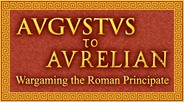It's rather worrying... The water which had grown used to seems to have stopped falling from the sky. The sky has changed from its customary tasteful shades of grey into a rather garish blue, and there's this strange bright thing in it that's making me squint. Think I'd better go and draw the curtains and hide under the bed-clothes until it stops.
My conversation with Dave Imrie yesterday set me thinking about how I approach my painting, and particularly, how I choose colours. That's something I don't think I've shared on my blog - or if I have, it was on the old one a very long time ago. Choosing colours for figures is one of life's little pleasures. There are few things I enjoy more than opening the drawer with the paint pots in, and picking out a load to see how they all look together, and thinking how they'll look on the primed figures, sitting there waiting to be brought to (almost) life.
I try to 'theme' my projects, and my armies. It's not an absolute, but if you were to examine carefully photographs of my figures, you might spot how I do it. It'd be quicker, and involve less of a headache for you, if I told you! Some of this involves doing things that aren't 'realistic' - like assuming that everyone in the world makes their spears from the same sort of wood! We could, of course, be pretentious and say that rather than being unrealistic, I am exercising artistic licence.
So, anyway, where to begin. There are certain things that I almost always paint the same, whatever the figure. Spears are always painted Foundry 13B 'Spearshaft'. Leather belts and straps are always Citadel 'Bestial Brown'. Bronze is usually Foundry 36B 'Gold', whilst steel is Citadel 'Chainmail' and silver is Citadel 'Mithril Silver'. Sometimes, on things like chariots or war machines, I paint some of the iron/steel parts Citadel 'Boltgun Metal' for a bit of variety, but that's about the only exception. Chainmail is always painted by priming black (I use Humbrol enamel, as it has less surface tension, and so sinks into the links better than any acrylic), and then dry-brushed Citadel Mithril Silver. Caucasian flesh is painted Vallejo 018/955 'Flat Flesh', arabic flesh with Foundry 55B 'Butter Fudge'. Black is, well, black, highlighted (because the 'Dip' won't shade black) with Foundry 34C 'Charcoal Black'. And so on. This set of 'colour identities' subtly 'ties together' everything involved in the project, and speeds the job up too, because I don't need to think about anything painted these colours - I just reach for the right paint pot and slap it on.
And then each army has its set of colours - and set of colours I try not to use. For example, my early Imperial Romans almost all have a bit of red on them somewhere (even if only a neckerchief). The red I usually use is Foundry 37B 'Terracotta' - though if a unit of figures has a lot of red on them, I will create some variation by also using Foundry 59A 'Brick red', 60B 'Madder Red' and Vallejo 136/818 'Red Leather' on different garments so that they don't look too uniform. There is almost no blue or green on the actual figures (other than shield transfers on a couple of units) at all. My ancient Britons, on the other hand, have lots of different bright colours, including a lot of blues (all that woad!) and greens, but only a little red.
So, the two armies are 'tied together' by having common colours of wood, leather, metal, etc, and differentiated not just by their different physical form, but also by colour.
One thing Dave and I remarked on yesterday was that, when placed on the wargames table, if all the figures are based in a similar way, with the same grit, flock, static grass, and the same paint, they will all look as though they belong together at 'table-top distances', even if the figures themselves are painted to very different standards by different people. There must be a psychology PhD in there somewhere - why don't you notice the figures if all the bases are finished the same way? So, try to keep your basing consistent - find a method you like, which looks good (and, ideally, matches your terrain boards) and stick to it.
I'm taking the same sort of approach with my 'Fire in the East' project - in fact, my Romans are getting the same set of colours as my early Imperials: it seems to 'work' and saves me thinking it all out again!
I'm not just sure how I'm going to tackle the Sassanids in this regard. The Sassanids ruled over an empire in the Middle East, and their army consisted of a number of different contingents - like, for example, the Parthians, as well as the Persian nobility (who formed the noble cavalry arm), and men from the cities, who fought as infantry, armed with spears, and others. Each has a different 'look' to their clothing, and so really needs to be painted differently. But at the same time, I feel the need for a common colour, or colours, to use. But I don't want them all to look as if I've tried to make the same! Tricky. The city militia infantry (link) are mainly white, with trousers in shades of grey, and most of the cloaks in dusty blues, with soft green on the officers. I'm hoping to use greens and blues (and turquoises), all very much brighter (to reflect their higher wealth and status - i.e. able to afford better cloth) on the noble cavalry. But what to do about the Parthian horse archers? I think that probably, the thing to do is just to try to avoid using red, where possible, and make them quite colourful. Perhaps the only ones with purple ought to be the Sassanid noble cavalry.
